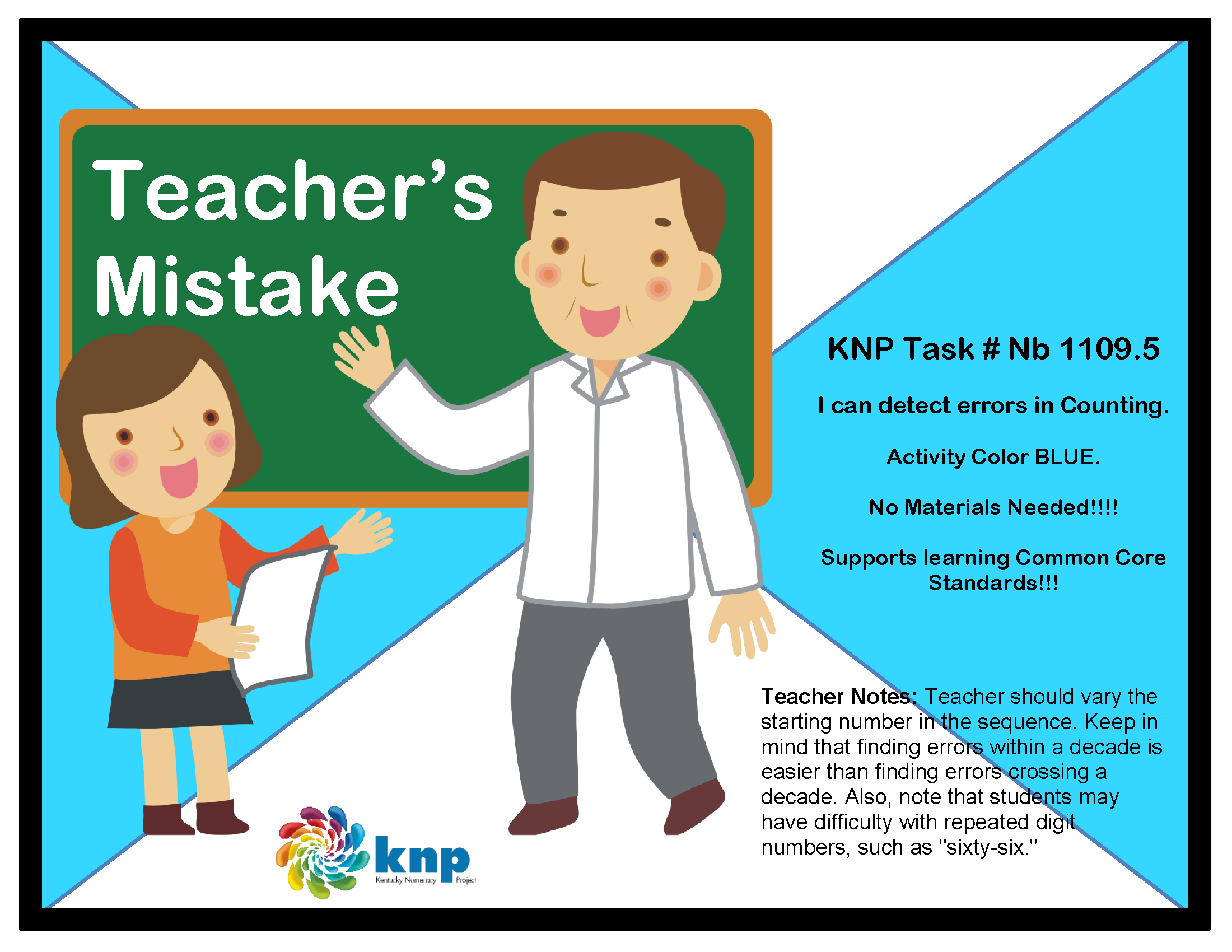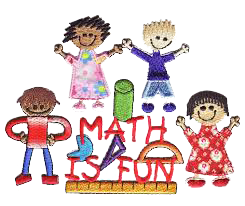“Teacher's Mistake- 100 to 30”
KNPIG ID #Nb 1109.5
What's this activity about?
This activity is great for quick math practice with sequencing number from one hundred to thirty. You can do this anywhere because there are no materials needed! You say a set of numbers backward in the range of one hundred to thirty and leave one number out. Your child has to guess what number you missed. Then your child can have a turn being the teacher and see if you can figure out what number they left out. This is a great opportunity to fit some fun math practice in anytime.
What materials do we need?
No materials are needed.

How do we play?
Start counting backward a sequence of numbers starting anywhere between 100 and 30, but leave a number out (ex. 74, 73, 72, 70, 69). Have your child find your mistake. Give your child a point when they can identify the omitted number. Switch places and see if they can fool you!
Where’s the Math?
This activity has a lot do with what your child is learning in school. Your child is learning about number order and how to count forward and backward from any given number instead of having to begin at one. This is an important step when beginning to work with addition and subtraction with combinations of one and two digit numbers. Your child is also learning about place value and working with numbers while crossing decades- 10, 20, 30 etc.
Things to Think About:
When working with children remember to BE PATIENT. It may be hard not to help when they are struggling but learning how to problem solve on their own is an important developmental step. Just like learning the alphabet before learning to read, learning numbers and number order should come before more difficult math. Remember, making mistakes is all part of the learning process. The most important thing is to make this fun!
If your child is struggling, try practice counting varying sequences forward and backward together before going back to finding the missing number. Your child may also have some difficulty in crossing decades and a little extra help may be necessary at first. Give extra attention to finding the errors together when crossing decades before expecting them to do it independently. In no time, this activity will become a piece of cake.
*If you have fun with this activity, try it counting forward also!*
Feedback
Send us your thoughts and ideas about these activities. Email the KCM

